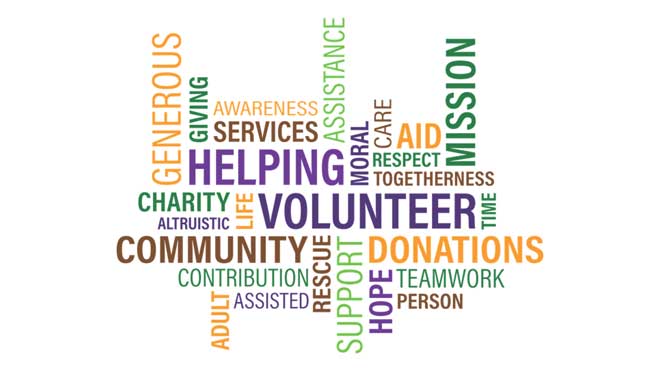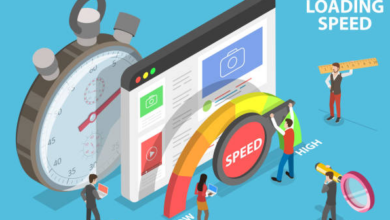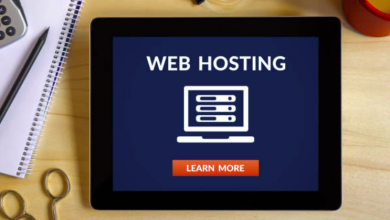
Designing a website for nonprofits requires a bit of work. Unlike a business site, you’re not pushing products or services. Rather, you aim to connect with stakeholders and audiences to elicit a particular action.
Your goal is to get donations or support for the organization. The website should be appealing and sway audiences to take positive action. The platform should also be excellent in showcasing projects and success stories.
Our article shares design processes you should apply for your nonprofit website today.
1. Decide On The Most Critical Elements Of The Website
There are some critical elements that you must have on the nonprofit website. These are:-
- About Us page that lets audiences know who you are. It should include a mission, vision, history, and even testimonials.
- Donation features like relevant forms for donations and volunteer recruiting. It is also crucial to have a call-to-action (CTA) on all pages.
- Relevant information on things like how to get involved in the activities of the nonprofit. It could be through time, money, or advocacy.
- Educational resources including white papers, articles, and case studies.
- Blogs for sharing content
You also want additional functionalities to get the most out of the site. Integrating your website with platforms like Google for nonprofits gives you so many benefits. The platform is free and easy to join. You get access to G Suite for document creation, sharing, collaboration and so much more. Google Ad Grants will give your organization up to $10,000 worth of advertising value.
YouTube for nonprofits is a fantastic place to showcase work through video content. You can also embed the donation button, and collect donations right on the platform. Google takes care of the transactional costs so that you receive the full amount. You will love the functionalities you get with this little gem from Google.
Read Also: How to Hire the Best Web Designer for Your Business
2. Choose The Right Content Management System (CMS)
The right content management system will make the setting up of your nonprofit website so easy. It saves you from starting everything from scratch. You also don’t need to factor in the cost of hiring a web designer full-time to do the work.
When looking for the perfect CMS, check for the following features.
- The layout should be attractive and customizable. It allows you to tweak the design to how you want it to look.
- Easy to use with drag and drop templates. It also helps if it has live editing tools. They allow you to see how the website will look, as you continue to design. The previews will allow you to make necessary edits before the final launch.
- The design should be mobile responsive.
- The right plugins to increase the functionality of the site. Such include those that help with fundraising, donations, reaching volunteers, and so much more.
- Relevant forms including donation, volunteer sign-up, and event registrations to name a few.
We will explore some of the features in a little more detail in the article.
Read Also: Premade Classified Website in PHP
3. Intuitive, Easy-To-Navigate, and Use Website
You are working hard to finish some work and need some information. You type in the search query and get tons of results.
You click on the link that looks most promising. It starts to load, slowly. Before long, you start getting into a hypnotic stage due to staring at the rotating loading indicator.
Like most people, you will not stay long. There are too many resources to waste time on an unresponsive page. We have all been through this and you know how frustrating it can get.
Your non-profit organization cannot afford:-
- Slow loading pages
- Hard to navigate pages
- Dead links that go nowhere, or result in 404 errors
Corrective actions include:-
A. Fast Page Loading Speeds
Choose the right web host provider. They should be able to give you sufficient bandwidth to handle any amount of Internet traffic. There are times when the nonprofit website will experience peak traffic.
It could be when you are running specific campaigns. It would be a terrible time for the site to crash or become unresponsive. You will also want to do the following to ensure faster loading speeds.
- Resize or compress heavy images.
- Be careful about the number of plugins, scripts, or other customizations. Such may consume a lot of space or storage leading to slow loading.
- Reduce the number of redirects and leverage on page caching.
- Minify JavaScript, CSS and HTML.
B. Easy Navigation
Moving through the website should be seamless. You can do this with a few steps.
- Display the navigation bar in a prominent position. Ideally, it should be at the top or on the left side.
- Keep the titles short and catchy to increase engagement.
- Avoid having too many levels for the drop-down menus.
- The information should be easy to see. So, pay attention to how you display or present information.
Do not forget a powerful Call to Action. These act as subtle nudges to get audiences to remember to take the right action. It is also important to have a chat feature. Modern audiences like the convenience and quick responses to queries.
A good option, budget allowing, would be to use technologies like chatbots. Such are available 24/7. They provide quick feedback and can handle frequently asked questions.
AI chatbots are even better. They can simulate or mimic humans by learning behavior. They will then customize responses, depending on what the stakeholders ask.
4. Mobile Responsiveness
Many nonprofit audiences and stakeholders use mobile devices to browse the internet. You do not want to miss out on such audiences because the site layout does not translate well on mobile.
One method that is taking off is the mobile-first approach to web design. So what does this mean? Imagine how hard it is to get all the elements of a website on a small screen. But, if you crack that brief, then scaling for a larger screen becomes a breeze.
The approach is different from scaling down elements from a large screen to a small one. If you do it this way, you may end up losing critical elements that could impact the user experience.
It is also important to note that Google uses mobile-first indexing when ranking sites. And the pressure does not end there. You must check that all the elements and content available on the desktop version are on mobile.
Keep up with checking that you have optimized the website for mobile. Use tools like PageSpeed Insights, Google Search Console, and WebPageTest for this.
5. Focus on content
Good content provides a powerful way to communicate with the audiences. You can also use such to update stakeholders on nonprofit activities.
Good content can help position your organization as an authority. The result is more traffic to your website thus greater visibility.
When thinking about content, you should:-
- Use different formats like articles, whitepapers, and case studies. Now will be the perfect time to set up your YouTube for nonprofits account. As we shared, it is part of the package on Google for nonprofits. Video content provides a powerful storytelling tool. Humans are visual creatures and will interact better with images as opposed to text.
- Implement search engine optimization (SEO) through the use of relevant keywords specific to your work. Also, do the same for Meta descriptions, captions, and even URLs. You want to make it easy for the search crawlers to find your organization.
- Look for link-building opportunities on high-authority websites. It helps increase traffic and position your organization as an authority
- Link all the posts to your social media platforms. It increases the chance of more people seeing the content.
The right CMS tool will have a blog editor for easy drafting, formatting, and editing of blog posts. You can also schedule them so that the content goes up at predetermined times.
Remember to interact with the audience to increase engagement. Ask them to share, like, or retweet. Don’t forget to respond to any queries or feedback they may have.
Some nonprofit organizations have community managers. Their sole responsibility is to interact with audiences. The manager also shares news or events so that stakeholders are always up-to-date with what is happening.
A good website needs to have that interactive space for such purposes. The community manager can even use podcasts or video conferencing to interact with the visitors.
6. Website Security is Critical
Non-profit organizations collect a lot of information from donors and other stakeholders. It is critical to ensure the safety of such data. You also increase the level of trust amongst audiences when you show security badges on the website. Good security is also important if you will be accepting donations on the platform. Donors need to know that their money is safe.
Install the necessary security measures. Such include antivirus, anti-malware, and anti-ransomware. Also, use HTTPS connections on your website. Keep up with software updates and backup your data.
The non-profit organization must invest in creating a culture of cybersecurity awareness. That means every employee understands their role in proper online security.
7. Monitoring and Testing
Monitoring and continuous testing are important. Some of the things you must keep up with are:-
- Quality assurance testing (Q&A) to check basic functionality. Check that the user experience is the same on different browsers or devices. Such tests will also let you know if things like navigating, links, and online forms are working well.
- Usability testing to determine the user experience.
- Vulnerability testing to see if your security measures are working.
- Stress testing establishes the ability of the website to handle large amounts of traffic.
Do not underestimate the importance of ensuring that your website is performing well at all times.
See also: How Much Does It Cost to Build a Video Conferencing App in 2021
Final Thoughts
We have looked at some of the crucial processes when designing a nonprofit website. You must provide a good user experience. The page loading speeds need to be fast. Navigating through the website should be seamless and intuitive.
Have prominent call-to-action buttons on all the pages. You want the audiences to take specific action for the benefit of the nonprofit organization. Pay attention to the critical elements that you must have on the website. Such include donation forms and volunteer registration.
Take advantage of the best SEO practices to get good rankings on the search engines. Such include keyword use, security, mobile responsiveness, and fast-loading pages. Finally, put in place systems to monitor and check the performance of the website at all times.







